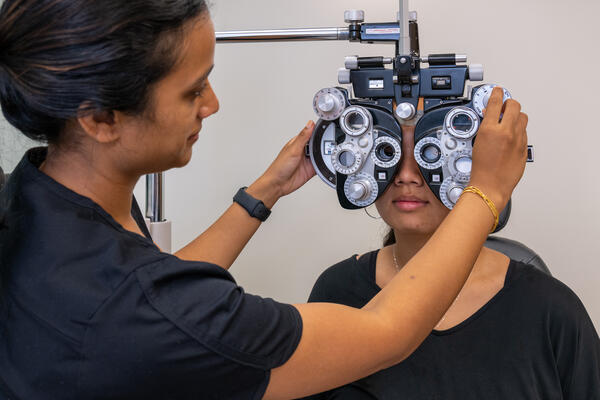The Advantages And Disadvantages of Various Refractive Surgical Treatments for Improved Eyecare

LASIK Surgical Treatment
LASIK surgical treatment is a frequently executed refractive treatment that aims to correct vision concerns such as nearsightedness, astigmatism, and farsightedness. During the procedure, a slim flap is developed on the cornea, and a laser is used to improve the underlying tissue, remedying the refractive error.
Among the key benefits of LASIK surgical procedure is the fast renovation in vision experienced by numerous people. The majority of individuals discover a substantial improvement in their sight quickly after the procedure, with minimal downtime required for recuperation. Additionally, LASIK is recognized for its high success price and low occurrence of complications when executed by proficient doctors. Like any kind of medical treatment, LASIK likewise carries some risks, including completely dry eyes, glare, halos, and under or overcorrection of vision. It is essential for individuals taking into consideration LASIK surgery to undergo a comprehensive evaluation by an eye treatment professional to establish if they appropriate candidates for the treatment.
PRK Treatment
The PRK procedure, also called Photorefractive Keratectomy, is a kind of refractive surgery that intends to remedy vision problems similar to LASIK surgical procedure. Unlike LASIK, which involves producing a flap in the cornea, PRK works with the surface area layer of the cornea. Throughout the PRK procedure, the external layer of the cornea, called the epithelium, is eliminated to enable improving of the underlying corneal cells with an excimer laser. This improving aids to remedy refractive mistakes such as farsightedness, nearsightedness, and astigmatism.
One of the benefits of PRK over LASIK is that it removes the threat of flap-related problems since no flap is produced during the surgical treatment. In spite of the longer recuperation period, PRK can be a suitable alternative for people looking for vision adjustment surgery.
SMILE Surgery
A cutting-edge refractive surgical procedure method acquiring popularity in the area of ophthalmology is SMILE Surgical procedure. Small Cut Lenticule Removal (SMILE) is a minimally intrusive treatment that fixes vision by reshaping the cornea making use of a femtosecond laser. Unlike traditional LASIK surgical treatment, SMILE Surgical procedure involves creating a small cut in the cornea to remove a lenticule, which causes less disruption to the corneal framework and potentially much faster recuperation times.
One of the key advantages of SMILE Surgical procedure is its capability to treat myopia (nearsightedness) and astigmatism with high accuracy, resulting in exceptional visual outcomes for patients. The minimally invasive nature of the treatment additionally reduces the threat of complications such as completely dry eye syndrome, making it a beneficial choice for people looking for refractive surgical treatment.

LASEK Strategy
Having discovered he has a good point the benefits and considerations of SMILE Surgery, another significant refractive surgical treatment strategy worth checking out is the LASEK Strategy. LASEK, which means Laser-Assisted Subepithelial Keratectomy, is a type of laser eye surgery that aims to deal with refractive errors such as myopia (nearsightedness), hyperopia (farsightedness), and astigmatism.
Unlike LASIK, LASEK does not involve producing a corneal flap. Instead, during a LASEK treatment, the doctor makes use of a diluted alcohol solution to loosen up the slim external layer of the cornea, recognized as visit this website the epithelium.
Among the key benefits of LASEK is that it can be suitable for people with slim corneas that may not be excellent candidates for LASIK. Additionally, LASEK typically leads to minimal post-operative discomfort and a quicker recovery time contrasted to PRK. The visual healing procedure with LASEK may be somewhat longer than with LASIK.
Implantable Contact Lenses
Implantable Call Lenses use a lasting vision improvement remedy for people looking for an alternative to typical contact lenses or glasses. These lenses, also referred to as phakic intraocular lenses, are operatively put right into the eye to deal with refractive errors such as myopia (nearsightedness), hyperopia (farsightedness), and astigmatism. cardiologist andalusia. Unlike typical get in touch with lenses that sit on the surface of the eye, implantable contact lenses function within the eye itself, providing clear vision without the requirement for everyday maintenance or elimination
One of the essential advantages of implantable call lenses is their durability. As soon as placed, they can remain in the eye indefinitely, providing regular and stable vision improvement. Furthermore, these lenses can be an exceptional choice for people who are not good prospects for laser eye surgery or that like a relatively easy to fix vision adjustment treatment.
Nevertheless, implantable contact lenses do bring some dangers, consisting of the potential for cataracts or raised eye pressure. It is critical for individuals considering this option to seek advice from an eye care specialist to determine if implantable call lenses are the appropriate option for their you can try this out details needs and eye health and wellness.
Conclusion
In conclusion, each type of refractive surgical procedure has its very own benefits and downsides. LASIK surgery is popular for its quick recuperation time, while PRK procedure might be appropriate for clients with slim corneas.

In General, SMILE Surgery offers an encouraging alternative for individuals looking to enhance their vision through refractive surgery.